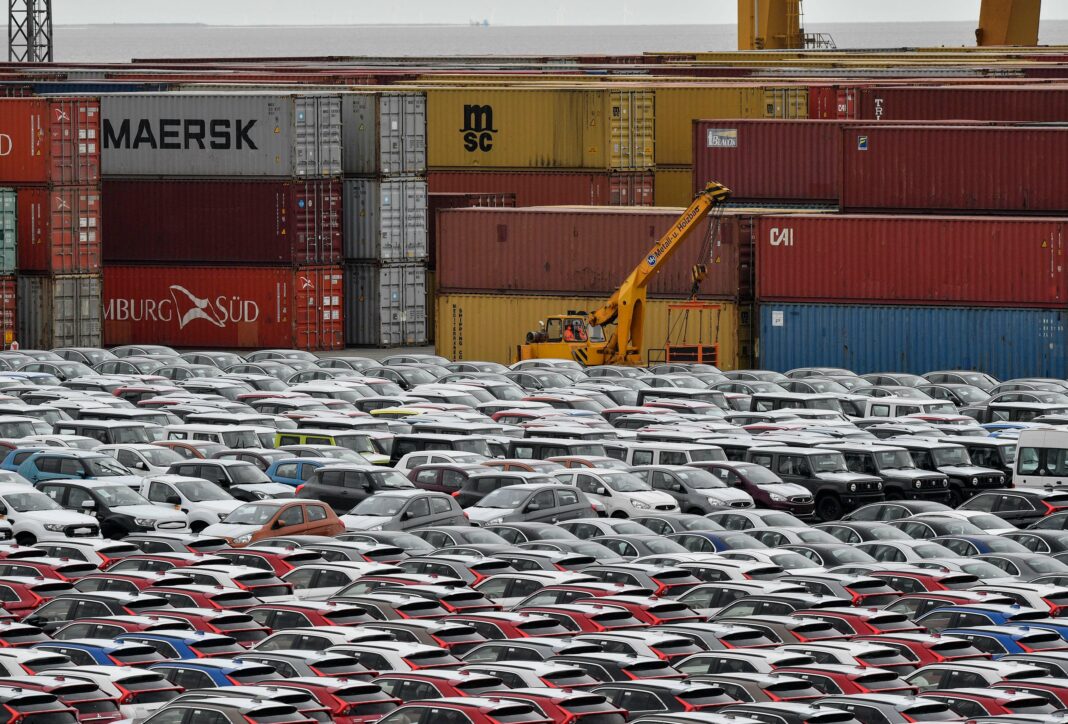Fifth Avenue in New York City stands as a symbol of luxury, highlighted by Trump Tower and luxury car brands. President Trump is pushing for a 25 percent tariff on EU vehicle imports, particularly targeting German manufacturers. With the U.S. automotive sector facing a perceived tariff disadvantage, the EU may benefit from proactive negotiations. Advocating for reduced tariffs on American cars could foster better trade relations and benefit consumers on both sides of the Atlantic.
Fifth Avenue: A Hub of Luxury and Power
Fifth Avenue, situated in the bustling heart of New York City, is flanked by iconic landmarks such as the Empire State Building, Rockefeller Center, and St. Patrick’s Cathedral. Among its prestigious addresses is Trump Tower, a symbol of luxury where renowned German automotive brands like Porsche, Mercedes-Benz, BMW, and Audi are prominently displayed. This prominence may explain President Trump’s keen interest in imposing tariffs on German vehicles.
The Impending Tariff Threat and Its Implications
This week, President Trump reiterated his stance on implementing a 25 percent tariff on vehicles imported from the EU, including Germany. While he has threatened various industries with steep import tariffs, the automotive sector seems to capture his particular focus. Trump perceives this industry as unfairly treated and is poised to unveil a detailed plan for these car tariffs on April 2. This initiative would primarily impact German manufacturers and the American-European Stellantis group, which includes brands like Jeep, Chrysler, and Peugeot. The pressing question for policymakers in Brussels and Berlin is how to effectively respond to these threats.
Historically, tariffs have evolved through negotiations that often involve multiple product categories. There is no binding law or international agreement mandating that reciprocal tariffs must align in height. However, Trump has noted that the EU imposes a 10 percent tariff on U.S. vehicle imports, while the U.S. levies only 2.5 percent on EU passenger cars. Additionally, a 25 percent tariff exists in the U.S. for vehicles intended for goods transportation, significantly affecting popular pickups and vans. According to Commerzbank, the “tariff disadvantage” for the U.S. automotive sector is around 6 percentage points.
In contrast, American brands have a minimal footprint in the EU automotive market, holding a market share of approximately 6.5 percent in 2024, with about 5.5 percent in Germany. Ford, Tesla, and Jeep are the most notable players, with Ford manufacturing across several European nations and Tesla operating a substantial facility near Berlin. Other U.S. brands like Cadillac and Chrysler contribute minimally to imports.
On the other hand, BMW and Mercedes-Benz, which have production facilities in the U.S., are significant exporters to the EU, particularly of SUVs. Together, they manufacture over half a million vehicles in the U.S., with a large portion earmarked for export to the EU.
Given this landscape, the EU is well-positioned to adopt a proactive approach in dealing with Trump, rather than remaining passive and responding defensively. An open trade war would not benefit Europeans, especially not export-driven economies like Germany and Italy. Instead, Germany should advocate for lowering import tariffs on American vehicles to an equivalent of 2.5 percent or ideally to zero. This move would not only extend an olive branch to Trump but also neutralize his tariff ambitions. European manufacturers do not require protection from U.S. competition, as most American brands struggle to gain traction in Europe. Moreover, eliminating tariffs would benefit consumers on both sides of the Atlantic.
Stay updated with insights from Frankfurt economic correspondent Michael Rasch on platforms like X, LinkedIn, and Xing.
